1, zabbix overview
Zabbix is an enterprise class distributed open source monitoring solution.
Zabbix software can monitor the health and integrity of many network parameters and servers. Zabbix uses a flexible alarm mechanism that allows users to configure email based alarms for almost any event. This allows users to respond quickly to server problems. Zabbix provides excellent reporting and data visualization based on stored data. These features make Zabbix an ideal choice for capacity planning.
Zabbix supports active polling and passive capture (trapping). All Zabbix reports, statistics and configuration parameters can be accessed through the Web-based front-end page. The Web-based front-end page ensures that you can access the network status and server health you monitor anywhere. After proper configuration, Zabbix can play an important role in monitoring the IT infrastructure. Whether for a small number of users The same applies to small organizations with servers or large enterprises with a large number of servers.
2, zabbix function
zabbix distributed system monitoring
Zabbix is a highly mature and perfect network monitoring solution. A software package contains a variety of functions.
data acquisition
Availability and performance inspection;
Support SNMP (including active polling and passive capture), IPMI, JMX and VMware monitoring;
Custom check;
Collect the required data according to the user-defined time interval;
Perform data collection through Server/Proxy and Agents.
Flexible threshold definition
You can refer to the backend database to define a very flexible alarm threshold, that is, trigger
Highly configurable alarms
You can send alarm notification according to the increment plan, receiver and media type;
Using macro variables can make alarm notification more efficient and useful;
Automatic operations include remote execution commands.
Real time graphics
Using the built-in graphics function, the monitoring items can be drawn into graphics in real time.
Web monitoring function
Zabbix can track the click operation of the simulated mouse on the Web site to check the function and response time of the Web site.
3, zabbix build
1. Installing nginx
systemctl stop firewalld setenforce 0 vim /etc/yum.repos.d/nginx.repo [nginx] name=nginx repo baseurl=http://nginx.org/packages/centos/7/$basearch/ gpgcheck=0 enabled=1 yum clean all yum list
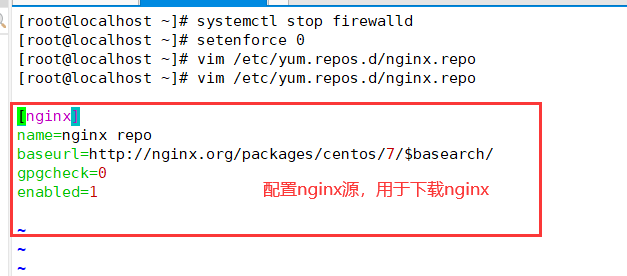
yum -y install nginx systemctl start nginx systemctl enable nginx netstat -natp | grep nginx
2. Deploy mariadb
yum -y install mariadb* systemctl start mariadb.service systemctl enable mariadb.service netstat -natp | grep 3306 #mysql Security Configuration Wizard mysql_secure_installation

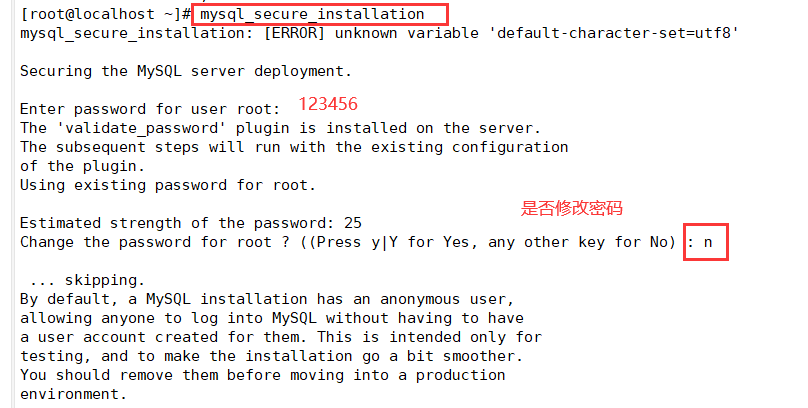
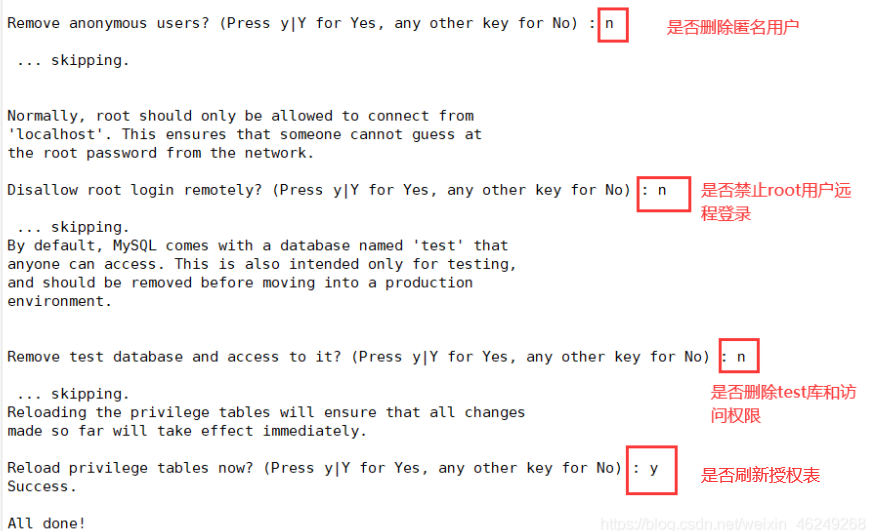
3. Deploy PHP
yum -y install epel-release.noarch Multiple installations rpm -Uvh https://mirror.webtatic.com/yum/el7/webtatic-release.rpm yum -y install php72w php72w-devel php72w-fpm php72w-gd php72w-mbstring php72w-mysql //Install PHP, language and language development packages, process dynamic requests, support image processing, and can process multi text strings php -v //View PHP version
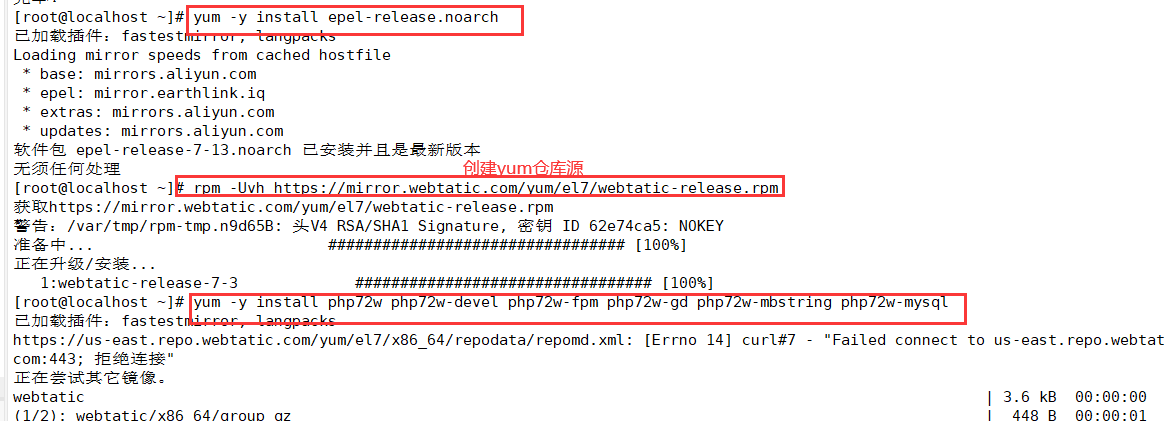

//Modify PHP FPM D configuration file vim /etc/php-fpm.d/www.conf ==8 Modify user== user = nginx ==10 Modify group== group = nginx

//Modify nginx master configuration file vim /etc/nginx/conf.d/default.conf //10 index.php //30-36 uncomment fastcgi_param SCRIPT_FILENAME $document_root$fastcgi_script_name;
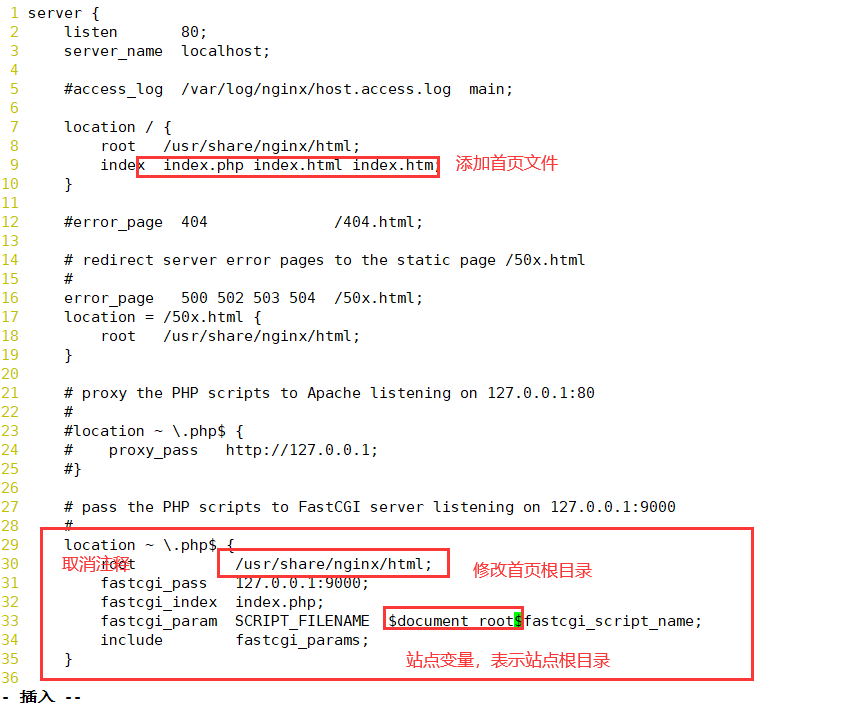
vim /etc/php.ini //202 short_open_tag = On //359 expose_php = Off //368 max_execution_time = 300 //378 max_input_time = 300 //656 post_max_size = 16M //799 upload_max_filesize = 2M //800 always_populate_raw_post_data = -1 //877 date.timezone = Asia/Shanghai

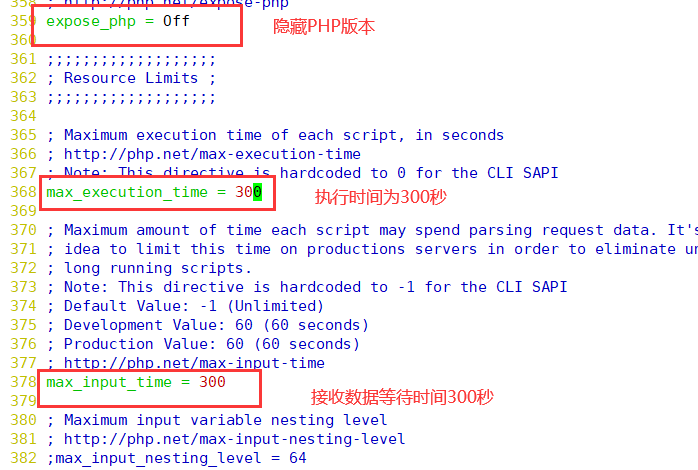



systemctl start php-fpm systemctl enable php-fpm netstat -natp | grep 9000

4. Test connection database
vim /usr/share/nginx/html/info.php <?php phpinfo(); ?> systemctl restart php-fpm.service systemctl restart nginx Real machine access http://192.168.110.10/info.php

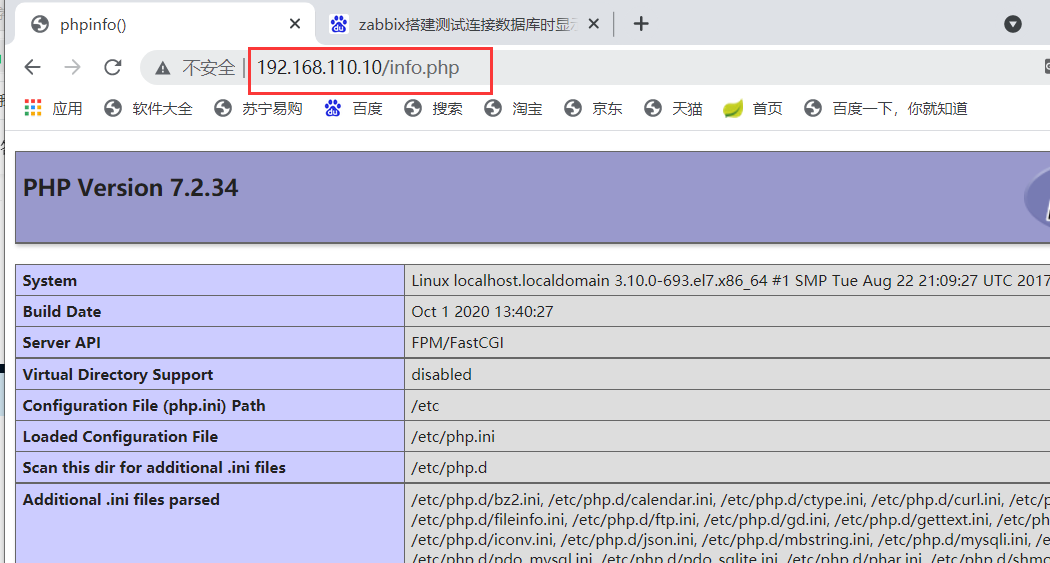
vim /usr/share/nginx/html/info.php
<?php
$link=mysqli_connect('127.0.0.1','root','123456');
if ($link) echo 'Connection succeeded';
else echo 'connection failed';
?>
==Real machine access==
http://192.168.110.10/info.php
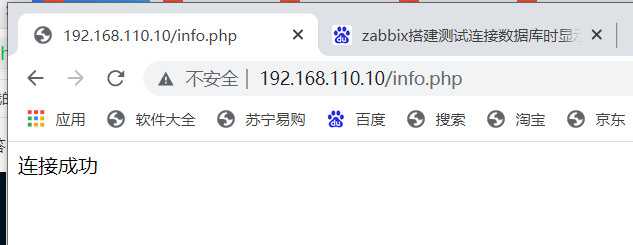
mysql -uroot -p123456 create database zabbix character set utf8 collate utf8_bin; grant all privileges on *.* to 'zabbix'@'%' identified by '123456'; flush privileges; exit
vim /usr/share/nginx/html/info.php
<?php
$link=mysqli_connect('127.0.0.1','zabbix','123456');
if ($link) echo 'zabbix success';
else echo 'zabbix fail';
?>
==Real machine access==
http://192.168.110.10/info.php
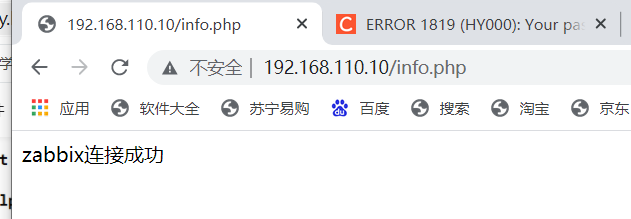
5. Deploy zabbix server
rpm -i https://repo.zabbix.com/zabbix/4.0/rhel/7/x86_64/zabbix-release-4.0-1.el7.noarch.rpm #Multiple installations yum -y install zabbix-server-mysql zabbix-web-mysql zabbix-agent

cd /usr/share/doc/zabbix-server-mysql-4.0.32/ zcat create.sql.gz | mysql -uzabbix -p zabbix mysql -u zabbix -p 123456 use zabbix; show tables;

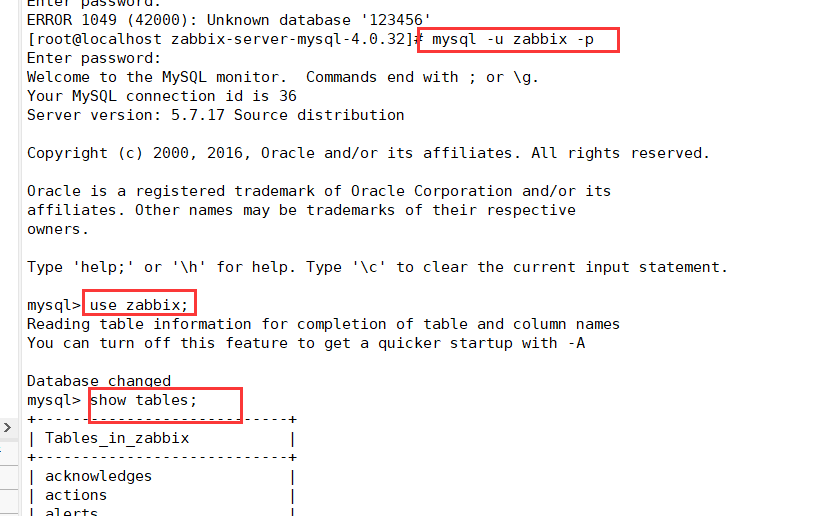
#Edit zabbix server configuration file vim /etc/zabbix/zabbix_server.conf #Define log file location and name //38 LogFile=/var/log/zabbix/zabbix_server.log #Define the log file size. 0 means unlimited size //49 LogFileSize=0 #Process file location //72 PidFile=/var/run/zabbix/zabbix_server.pid #Communication sock file //82 SocketDir=/var/run/zabbix #Database server, local //91 DBHost=localhost #Database name //100 DBName=zabbix #Database user //116 DBUser=zabbix #Database password //124 DBPassword=123456 #snmp protocol log location //356 SNMPTrapperFile=/var/log/snmptrap/snmptrap.log #Define timeout //473 Timeout=4 #Script storage location of alarm //516 AlertScriptsPath=/usr/lib/zabbix/alertscripts #Extensibility script storage location //527 ExternalScripts=/usr/lib/zabbix/externalscripts #Define slow query time //563 LogSlowQueries=3000


cp -r /usr/share/zabbix/ /usr/share/nginx/html chown -R zabbix.zabbix /etc/zabbix chown -R zabbix.zabbix /usr/share/nginx chown -R zabbix.zabbix /usr/lib/zabbix chmod -R 755 /etc/zabbix/web chmod -R 777 /var/lib/php/session systemctl start zabbix-server.service systemctl enable zabbix-server.service netstat -napl | grep 10051 systemctl restart php ==Real machine access== http://192.168.110.10/zabbix
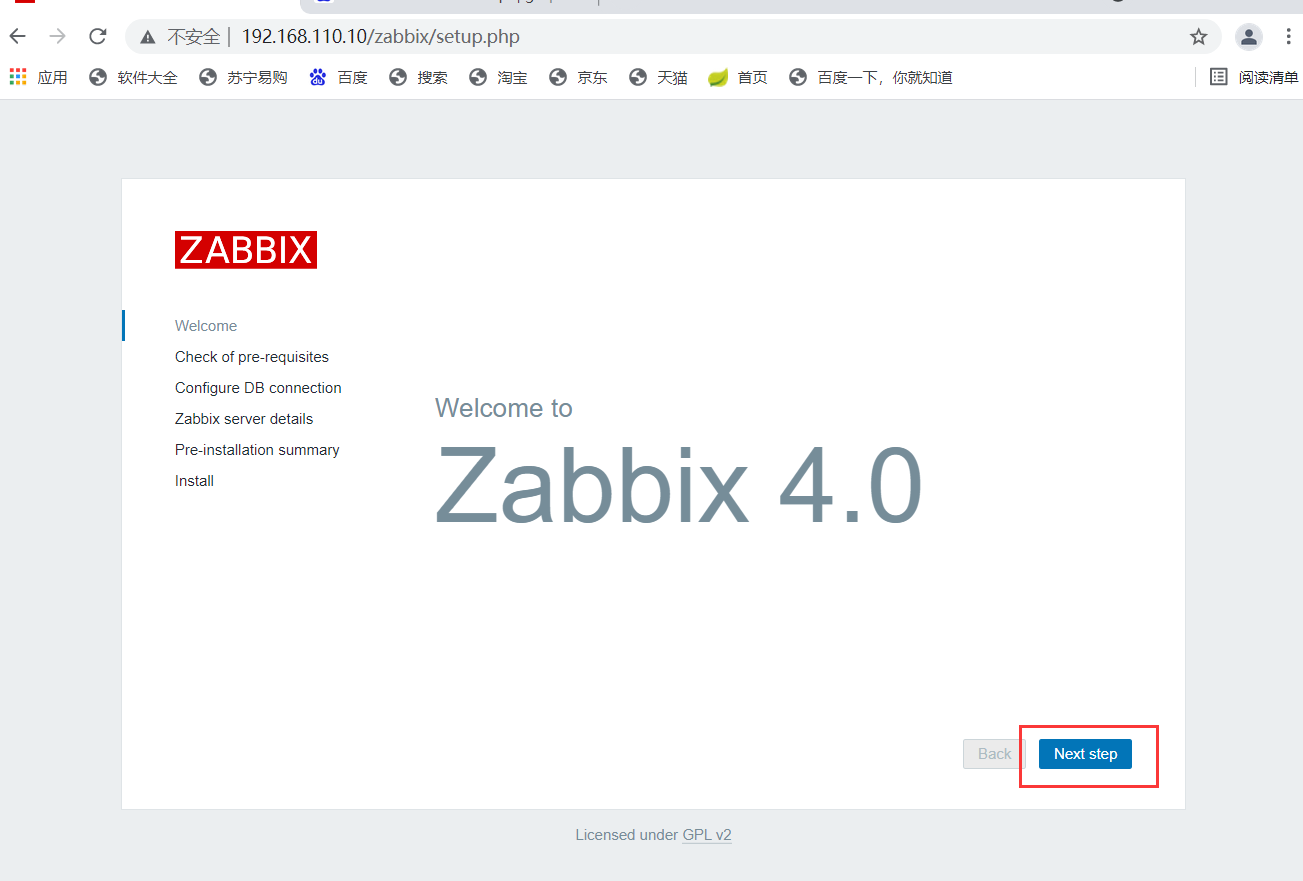
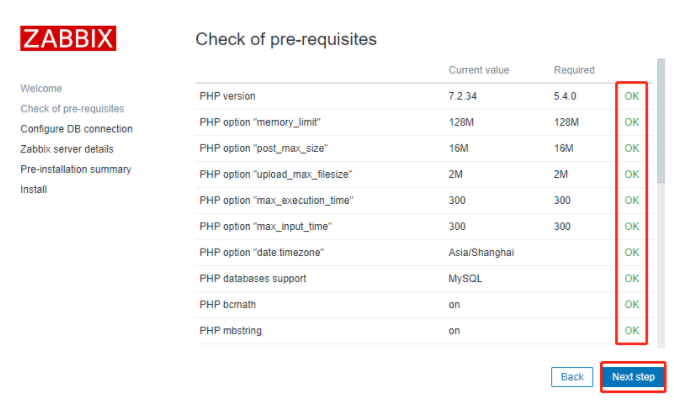
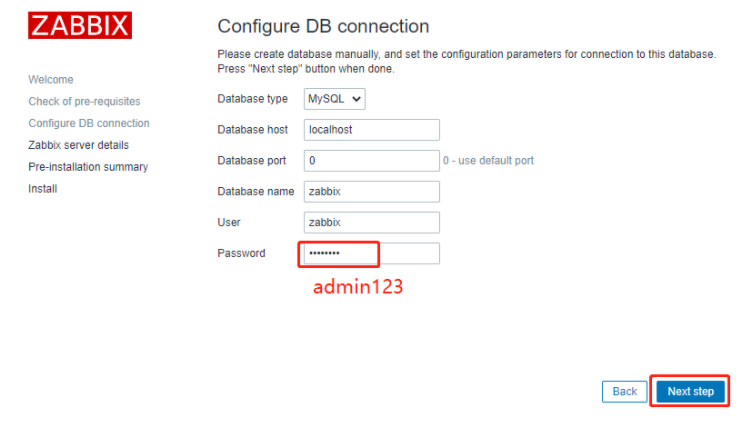
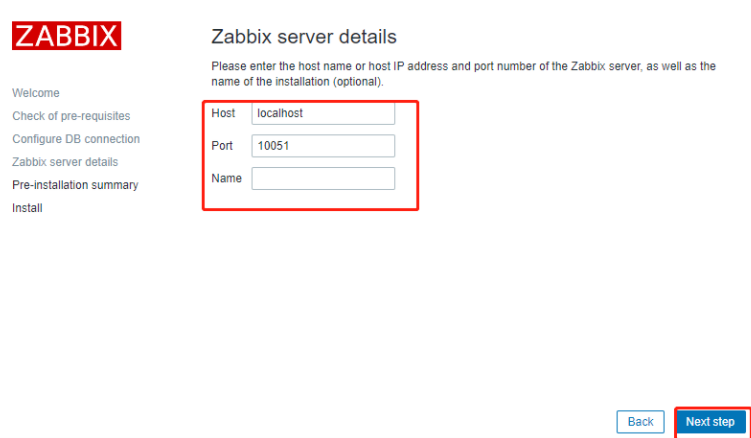
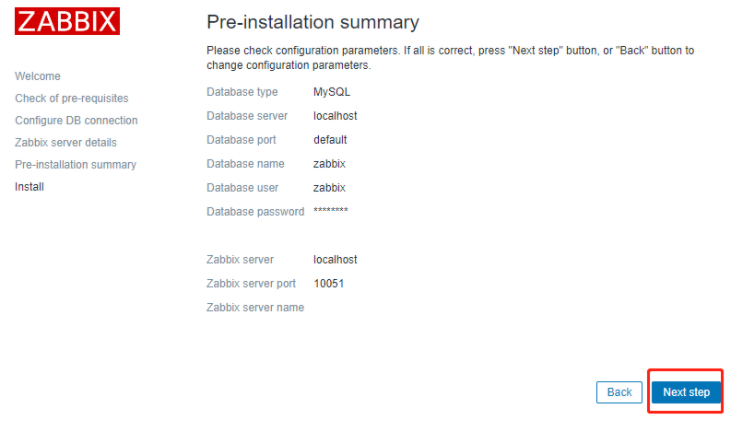
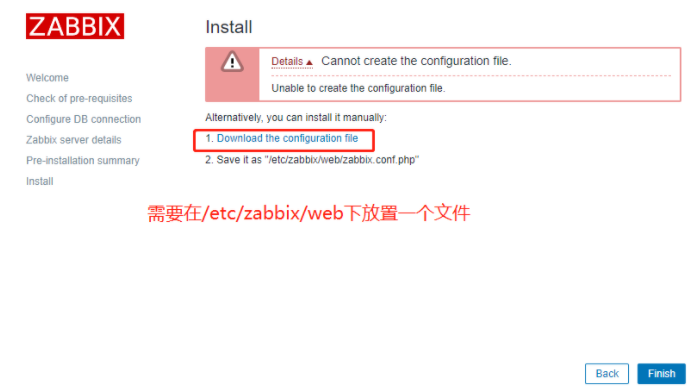
Link: ZABBIX conf.php
Extraction code: yipx
cd /etc/zabbix/web ls Compressed package chmod +x zabbix.conf.php systemctl restart php-fpm.service systemctl start zabbix-service.service Restart login http://192.168.110.10/zabbix
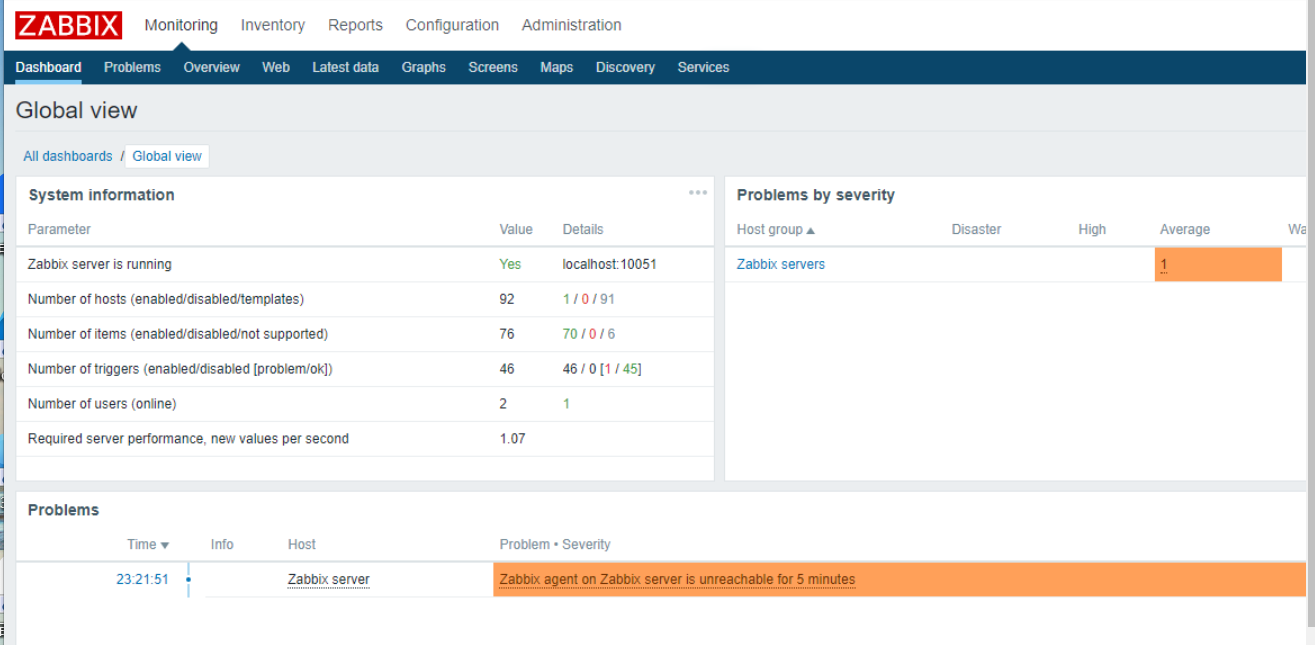
6. Configure proxy zabbix (192.168.110.20)
systemctl stop firewalld.service setenforce 0 rpm -i https://repo.zabbix.com/zabbix/4.0/rhel/7/x86_64/zabbix-release-4.0-1.el7.noarch.rpm yum -y install zabbix-agent vim /etc/zabbix/zabbix_agentd.conf //98 Server=192.168.110.10 address to monitoring end //139 ServerActive=192.168.110.10 pointing to the monitoring server //150 Hostname=test modify hostname systemctl start zabbix-agent.service systemctl enable zabbix-agent.service netstat -natp | grep 10050

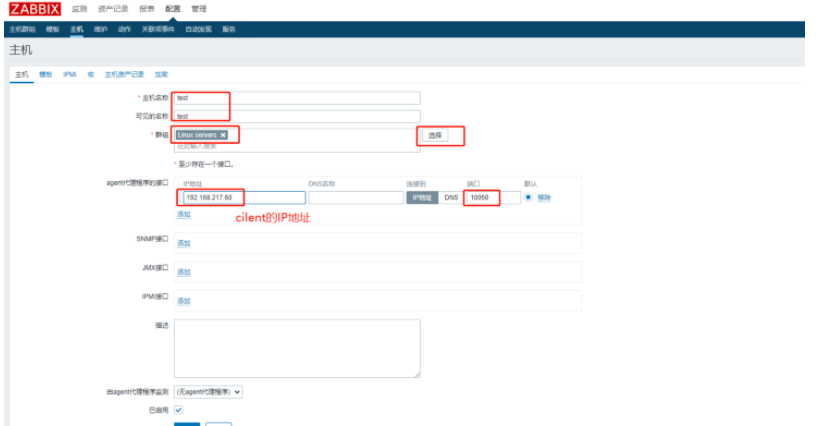
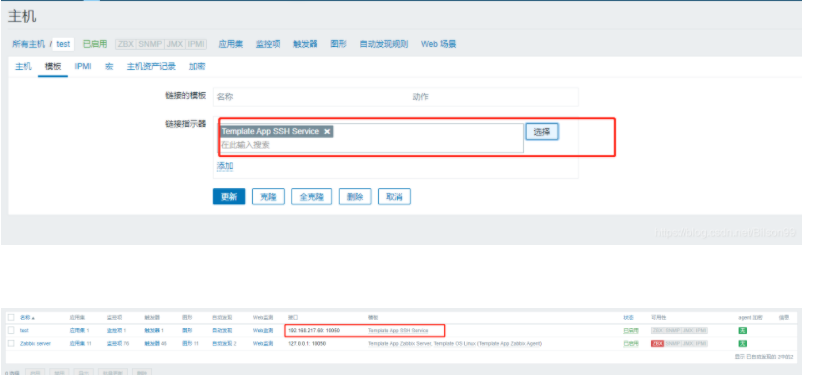
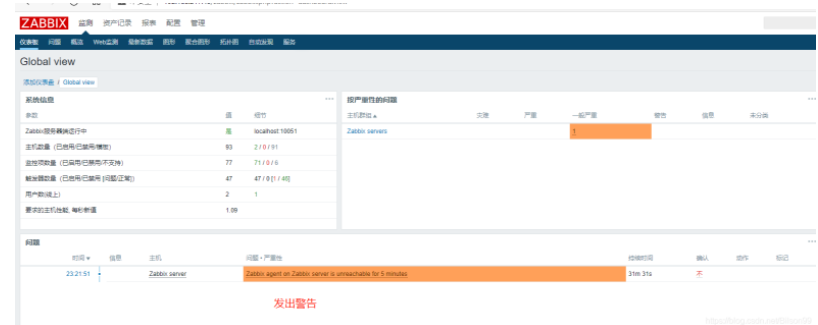
7. Configure automatic email Publishing
First, select the mailbox and start the pop3 and smtp services
QQ mailbox opening mode
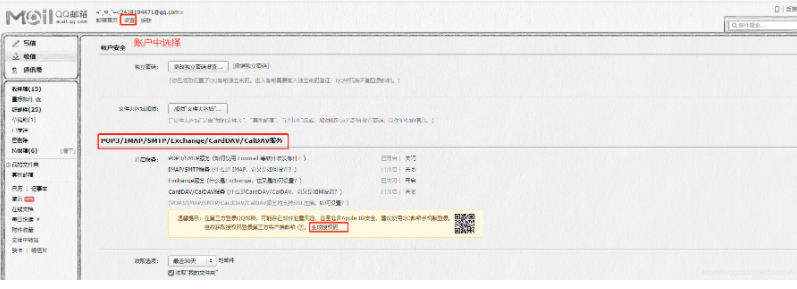
Configure on server
server(192.168.110.10)
yum -y install mailx vim /etc/mail.rc #Last line add set from=QQ number@qq.com set smtp=smtp.qq.com set smtp-auth-user=QQ number@qq.com set smtp-auth-password=Authorization code set smtp-auth=login #Test whether it can be sent normally echo 'hello wbw' | mail -s 'test' QQ number@qq.com
#Write the shell script for sending mail. Be sure to write it in this directory
cd /usr/lib/zabbix/alertscripts/
vim mailx.sh
#!/bin/bash
#send mail
messages=`echo $3 | tr '\r\n' '\n'`
subject=`echo $2 | tr '\r\n' '\n'`
echo "${messages}" | mail -s "${subject}" $1 >>/tmp/mailx.log 2>&1

#Create log file touch /tmp/mailx.log #Empowerment chown -R zabbix.zabbix /tmp/mailx.log chmod +x /usr/lib/zabbix/alertscripts/mailx.sh chown -R zabbix.zabbix /usr/lib/zabbix/ #Test script . /usr/lib/zabbix/alertscripts/mailx.sh QQ number@qq.com "zabbix" "hello world"
8. Web page configuration monitoring mechanism

{ALERT.SENDTO}
{ALERT.SUBJECT}
{ALERT.MESSAGE}
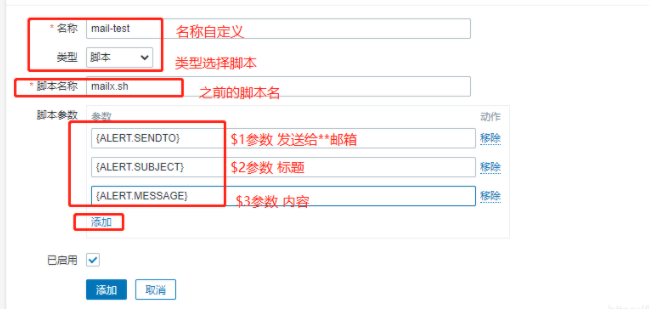

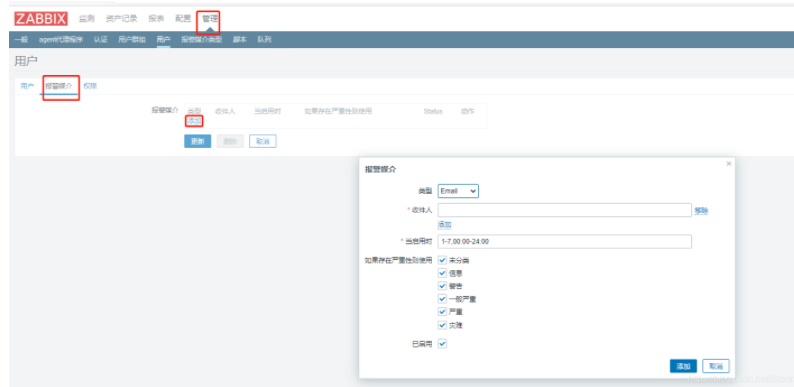
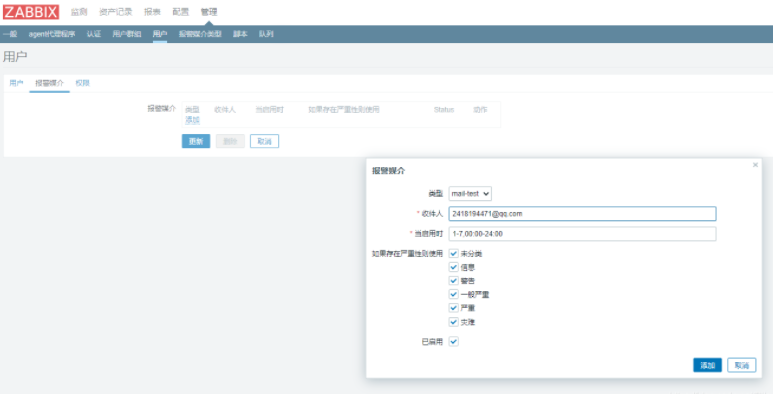
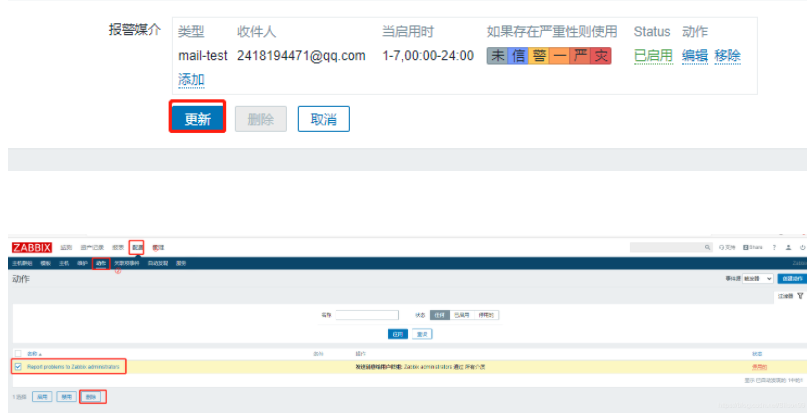
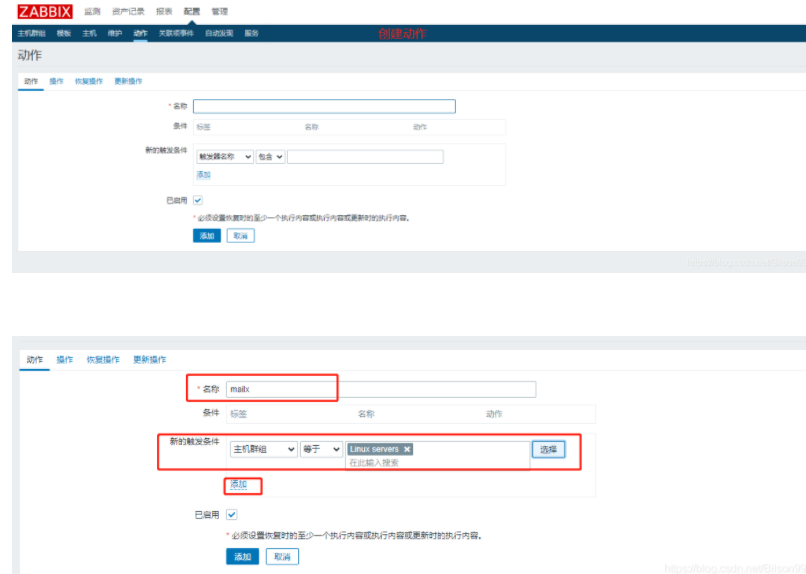
By default
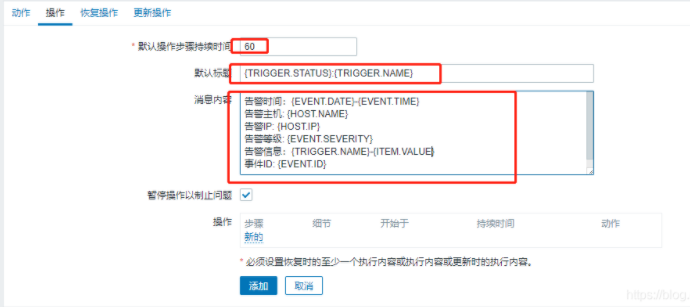
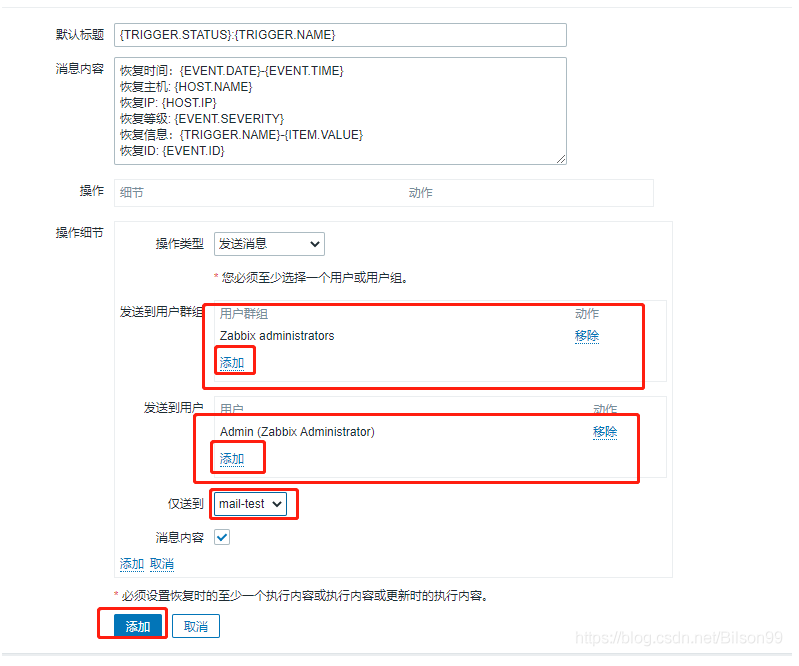
Server restart zabbix service
server(192.168.110.10)
systemctl restart zabbix-*
The proxy restarts the ssh service to see if the mail can be received
cilent(192.168.110.20)
systemctl restart sshd